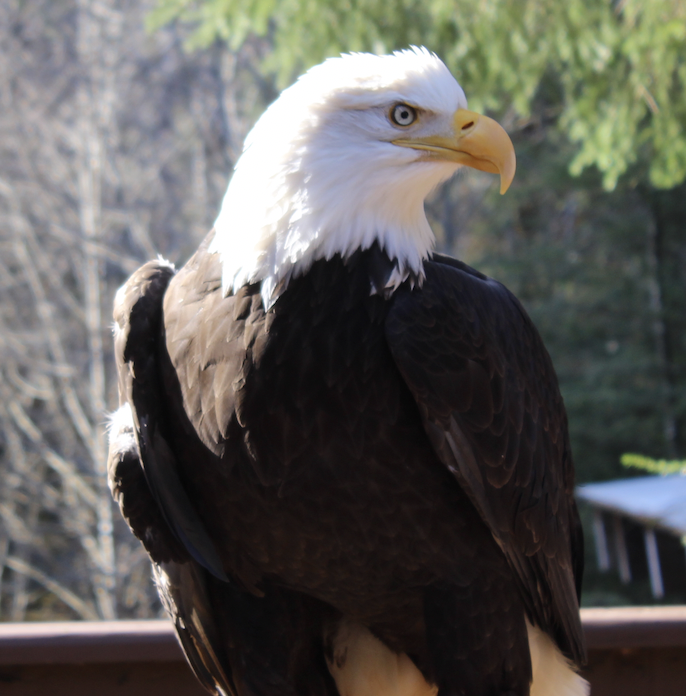
- Details
- By Levi Rickert
Among the 50 bills signed by President Joe Biden on Christmas Eve was S.4610, which amends title 36, United States Code, to designate the bald eagle as the national bird of the United States.
This official title comes almost 250 years after the Continental Congress that declared independence in 1776 decided they wanted to have a seal for the newly formed nation. A committee was formed and tasked with developing the Great Seal of the United States.
In 1782, after years of deliberation and refinement, Congress approved the final design for the Great Seal. It featured the bald eagle clutching an olive branch in one talon, symbolizing peace, and arrows in the other, signifying readiness for war. The bird’s outstretched wings and piercing gaze conveyed strength and vigilance, while the banner in its beak bore the Latin phrase "E pluribus unum"—"Out of many, one."
When the Great Seal was unveiled, it was met with awe and pride. The bald eagle, with its soaring flight and commanding presence, had become more than just a bird; it was a symbol of the United States itself. Over time, the eagle appeared on coins, flags, and official documents, its image inspiring generations of Americans.
Even so, the bald eagle was never the official bird of the United States.
The legislation, Senate Bill 4610, that made the bald eagle the official bird was introduced by U.S. Sen. Amy Klobuchar (D-MN). Klobuchar says Minnesota has the nation’s largest bald eagle populations.
"For nearly 250 years, we called the bald eagle the national bird when it wasn't," said Jack Davis, co-chair of the National Bird Initiative for the National Eagle Center, in statement. "But now the title is official, and no bird is more deserving."
Eagles are a prominent symbol and figure in almost every Native American tribe and one of the most widespread clan animals used by Indigenous cultures. Eagle feathers are used in Indigenous ceremonies, so in 1970 a federal repository of deceased eagles was created by USFWS so Native American tribes could access eagle feathers and other parts of the animal for tribal use.
More Stories Like This
Native News Weekly (August 25, 2024): D.C. BriefsUS Presidents in Their Own Words Concerning American Indians
Indigenous Actor Elaine Miles Reports Detention by Alleged ICE Agents
Happy Thanksgiving from Native News Online
Coming Up on Native Bidaské: Behind the Animation: Joey Clift Talks “Pow” and Native Storytelling
Help us tell the stories that could save Native languages and food traditions
At a critical moment for Indian Country, Native News Online is embarking on our most ambitious reporting project yet: "Cultivating Culture," a three-year investigation into two forces shaping Native community survival—food sovereignty and language revitalization.
The devastating impact of COVID-19 accelerated the loss of Native elders and with them, irreplaceable cultural knowledge. Yet across tribal communities, innovative leaders are fighting back, reclaiming traditional food systems and breathing new life into Native languages. These aren't just cultural preservation efforts—they're powerful pathways to community health, healing, and resilience.
Our dedicated reporting team will spend three years documenting these stories through on-the-ground reporting in 18 tribal communities, producing over 200 in-depth stories, 18 podcast episodes, and multimedia content that amplifies Indigenous voices. We'll show policymakers, funders, and allies how cultural restoration directly impacts physical and mental wellness while celebrating successful models of sovereignty and self-determination.
This isn't corporate media parachuting into Indian Country for a quick story. This is sustained, relationship-based journalism by Native reporters who understand these communities. It's "Warrior Journalism"—fearless reporting that serves the 5.5 million readers who depend on us for news that mainstream media often ignores.
We need your help right now. While we've secured partial funding, we're still $450,000 short of our three-year budget. Our immediate goal is $25,000 this month to keep this critical work moving forward—funding reporter salaries, travel to remote communities, photography, and the deep reporting these stories deserve.
Every dollar directly supports Indigenous journalists telling Indigenous stories. Whether it's $5 or $50, your contribution ensures these vital narratives of resilience, innovation, and hope don't disappear into silence.
 The stakes couldn't be higher. Native languages are being lost at an alarming rate. Food insecurity plagues many tribal communities. But solutions are emerging, and these stories need to be told.
The stakes couldn't be higher. Native languages are being lost at an alarming rate. Food insecurity plagues many tribal communities. But solutions are emerging, and these stories need to be told.
Support independent Native journalism. Fund the stories that matter.
Levi Rickert (Potawatomi), Editor & Publisher

